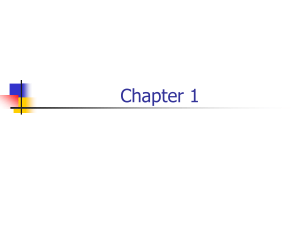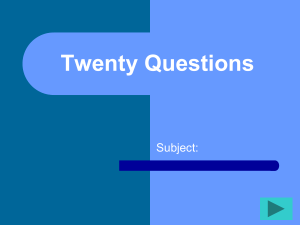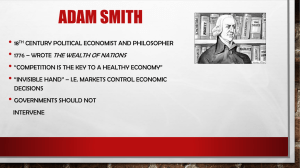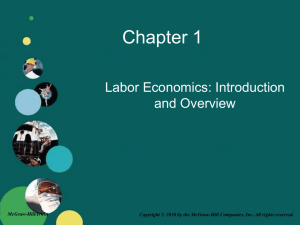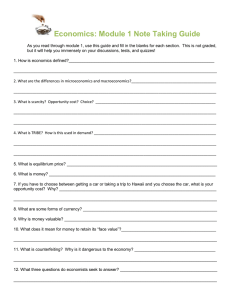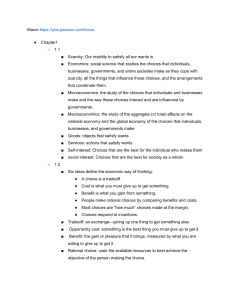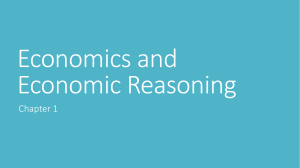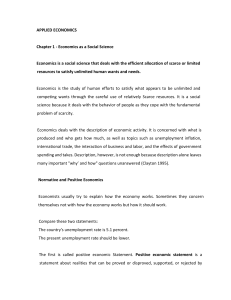Unit 1, Chapter 1
advertisement
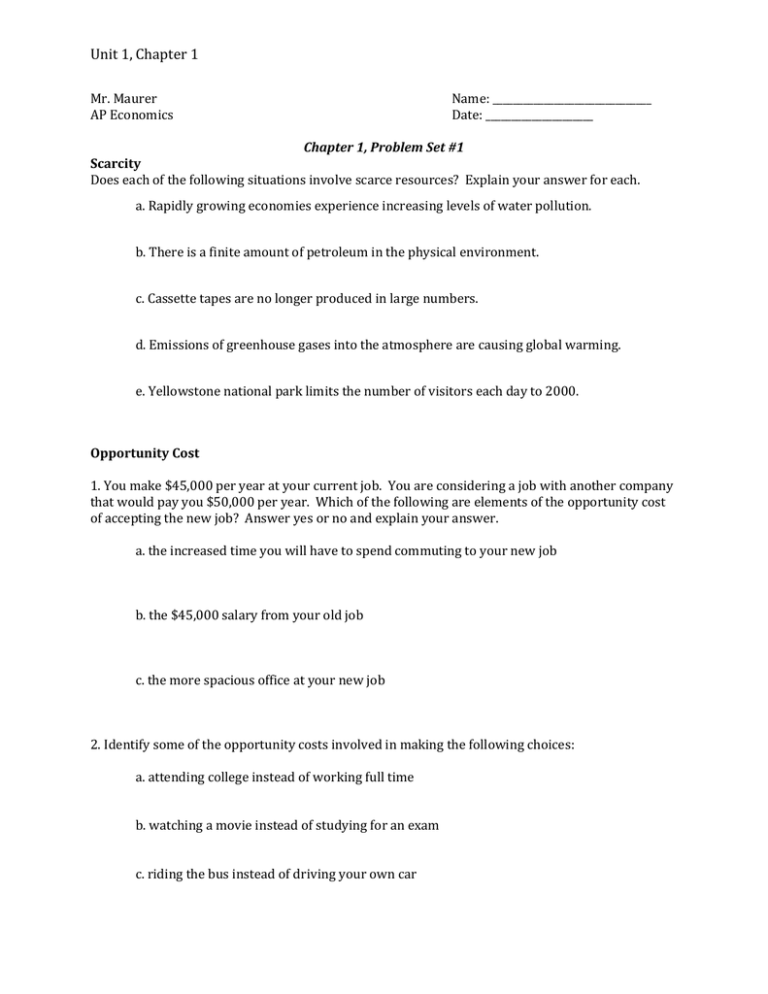
Unit 1, Chapter 1 Mr. Maurer AP Economics Name: _______________________________ Date: _____________________ Chapter 1, Problem Set #1 Scarcity Does each of the following situations involve scarce resources? Explain your answer for each. a. Rapidly growing economies experience increasing levels of water pollution. b. There is a finite amount of petroleum in the physical environment. c. Cassette tapes are no longer produced in large numbers. d. Emissions of greenhouse gases into the atmosphere are causing global warming. e. Yellowstone national park limits the number of visitors each day to 2000. Opportunity Cost 1. You make $45,000 per year at your current job. You are considering a job with another company that would pay you $50,000 per year. Which of the following are elements of the opportunity cost of accepting the new job? Answer yes or no and explain your answer. a. the increased time you will have to spend commuting to your new job b. the $45,000 salary from your old job c. the more spacious office at your new job 2. Identify some of the opportunity costs involved in making the following choices: a. attending college instead of working full time b. watching a movie instead of studying for an exam c. riding the bus instead of driving your own car Unit 1, Chapter 1 3. Use the concept of opportunity cost to explain the following: a. More people choose to get graduate degrees when the job market is poor. b. There are more parks in the suburbs than there are in urban areas. c. Convenience stores charge higher prices than supermarkets. 4. A new firm in town debates between paying $20,000 for a prime location versus $10,000 for another location. The firm estimates that it will eventually serve the same number of customers in either location, but that it will take six months before the suboptimal location provides the same outcome as the prime location. The firm purchases the $10,000 property. What is the opportunity cost of their decision? 5. Jamie chooses to take an unpaid internship with a company for the summer instead of earning $2000 as a camp counselor. From an economic perspective, why would she make that decision? Marginal Thinking 1. A major feature of the economic perspective is comparing ________________________benefits and _______________________ costs. 2. From an economic perspective, when a business decides to hire more workers, the business leaders must have concluded what about the benefits and costs of hiring the additional workers? 3. It is a law in economics that as more of a good is consumed, marginal costs increase while marginal benefits decrease. Explain how this could be true for each of the following: a. going to the movies b. eating doughnuts c. going fishing Unit 1, Chapter 1 Microeconomics vs. Macroeconomics State whether each of these would be studied in microeconomics or macroeconomics. a. the output of the entire U.S. Economy b. the general level of prices in the U.S. economy c. the output and price of wheat in the U.S. d. a cable company’s decision-making process on where to set their prices e. the effects of increasing consumer preference for coffee on the price of tea Positive economics vs. Normative economics Are the following statements examples of positive or normative economics? Explain your answer for each. a. Society should take measures to prevent people from engaging in dangerous behavior. b. People who engage in dangerous behavior impose higher costs on society through higher medical costs. c. The price of gasoline is rising. d. The price of gasoline is too high. e. Economists expect gas prices to rise in the near future. f. New York City should control the rental price of apartments. g. Consumer prices rose at an annual rate of 2% last year.


